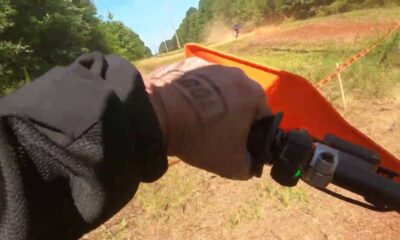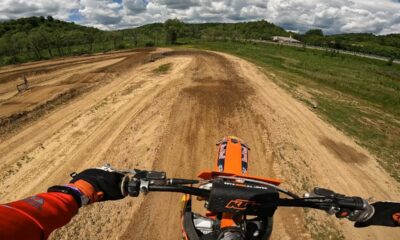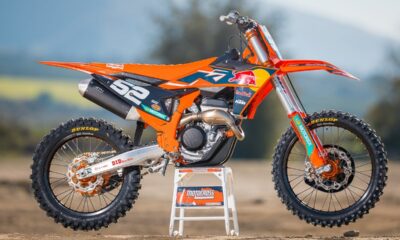News
“Think of Race Fuel as a Performance Part” | Bruce Hendel Vice President of VP Racing Fuels – Motocross Feature Stories
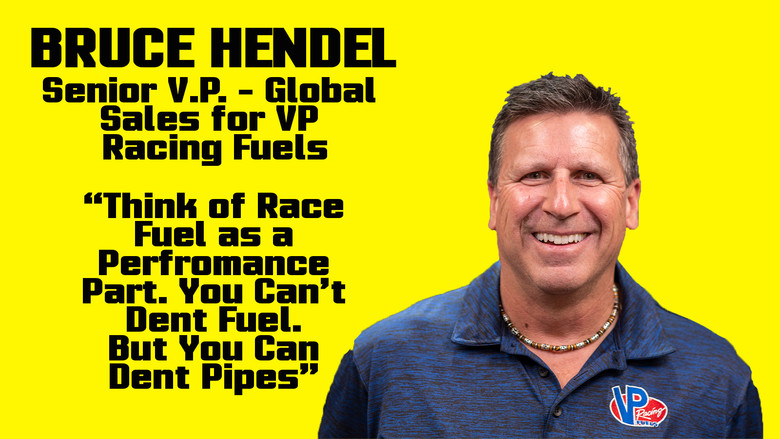
When it comes to our equipment, we all want the best performance possible. Often, we overlook the fuel we are putting in our machines. We stop at the local gas station, fill our can, and hit the track. Bruce Hendel is the Senior Vice President Global Sales/Race Fuels and Consumer Products, at VP Racing Fuels. He visited recently about how he started at VP, how they develop fuels for teams, and why it’s important.
For the full interview, check out the YouTube video right here. If you’re interested in the condensed written version, scroll down just a bit further.
Jamie Guida – Vital MX: I was told you have a bit of a background in motocross or dirt bikes. How did you get into Moto?
Bruce Hendel: Well, I was late in life for the two-wheel side. My parents weren’t big on motorcycles. And so interesting story, one summer when I was in college, that tells you how late in life it was for me to get involved, I earned some decent money. And so, what did I do with that money? I went out and bought a motorcycle, bought a Honda XR250. I put it in the garage, and I went over to my girlfriend’s house, and I called my parents and told them there was a motorcycle in the garage because I didn’t want to be home when they found out. That was the start for me. Even younger than that I was probably on a mini-bike and enjoyed it, but my parents were never going to buy me one. And then when I moved to the Midwest, I grew up on the East Coast originally, I went to a local store and I said, “I want to do some racing. And I know the Midwest has got to have some motocross tracks, so let me check out the scene”. I went down to the local store. It was Thompson’s Motorsports. Chad Thompson, who owns that now, is a very good friend of mine. Anyway, I walked in the store, and I said, “Hey, what’s the racing scene like around here”? He said, “Oh yeah, we got motocross all the time”. This is in Indiana. They had racing at a couple of different tracks every weekend. District 15, it’s a great deal. And I’m figuring, “Well, hell, I want to go out there and win”. So, I have to have whatever bike has the most power. That’s what it’s going to take. So, I of course picked the CR500. I never rode a 125 two stroke, 250 two stroke, I just went right for the 500 and showed up to my first race and I said, “I want to sign up for the novice class”. And they don’t have novice classes for the 500. I kind of learned the hard way. I made some good friends right away. All the guys on 500s became good friends. Actually, my brother-in-law, who I was really good friends with before I knew he had a sister, and I married the sister. But anyway, we became really good friends, and he rode a 500. He taught me a lot about riding. We raced every weekend. We were racing every Saturday and Sunday through the race season and ended up finishing second in the Open C class for District 15 that year. I’m not going to say that I was really, really that good. I think I just raced so much I scored a lot of points.
Vital MX: When did the opportunity come up at VP Racing Fuels?
Bruce: I got an opportunity to take a job with VP Racing Fuels back in ‘93. Gives you an idea how long I’ve been with the company, so I’m on my 30th year. I went out to the West Coast to take a job with VP running their West Coast division, and then was introduced to some other forms of racing, mainly desert racing. The first desert race, remember I jumped into something with both feet, right? The first desert Race I decided to do was Vegas to Reno. I’ve never done a desert race before. It’s 540 miles. I suckered my brother-in-law in to come out there and race it with me. And our goal was to finish, and we finished. We finished ninth out of like 21 or 22 entries in our class. We learned a lot of stuff. We learned what we need to do differently when we go back out to race that kind of race again. We thought, it’s a desert race, you have plenty of time. It’s a 540-mile sprint race. Every second counts. We didn’t have quick fill tanks. We didn’t have the right rider change strategy. We could have had three riders on the team. Instead, we just did it with him and I. So, we changed the strategy and two years later we went back out and won it.

Vital MX: Oh, very cool.
Bruce: Yeah. And then I raced it again later on in a different age group, the over 40 expert class at one point in time. Gary Jones is a good friend of mine. He’s a four-time AMA outdoor national champion from the seventies. We raced it together and won in a different age group. I’ve done that race, actually won Vegas to Reno three times in the class that we were racing in. It’s way more dangerous than Moto. I know it probably doesn’t seem like it because in Moto you’ve got all the jumps and all that other stuff that you’re dealing with and the whoops, but it’s the high-speed stuff and the stuff you can’t see. At least in moto, you know what’s coming because you know the track.
Vital MX: VP Racing Fuels has been around for almost 50 years. What did you know about fuel at the time you started? Did you have to learn everything from scratch, or did you have a little bit of background on understanding the chemistry of fuel?
Bruce: I didn’t know much. You know, I was a fan of the sport, and motor sports in general, especially the two-wheel side and enjoyed being involved in it. My background has been in accounting. I was in the sales side of it and running a business. I just got lucky. At the time I had a parts and accessory store and a KTM dealership in Indiana. I was selling VP Race Fuel at the time. I went to get some inventory from our local warehouse and ended up meeting the president and owner, two different people at the time, of VP Racing Fuels and just had an open chat with them and we hit it off well. I ended the conversation by saying, “if there’s any ever any opportunities back East or out West, let me know”. You might say that to a hundred different people, and nobody ever calls you on it. The next day I got a message. They want to talk to you about the West Coast. I’m an East Coast boy growing up, right? So as far as I’m concerned, the country ended at the Rocky Mountains, which was as far as I needed to go to get good skiing. But this position was located in California. I made the decision to take the position not knowing much about the product itself, although it was in the category of what I enjoy doing as a hobby. I thought it was a good fit for me and moved out to the West Coast and was out there for almost 21 years before transferring to the corporate office here in San Antonio.
Vital MX: VP is recognized as the leader in race fuels. How do you feel VP got there and what sets them apart?
Bruce: Well, if you go back to a little bit of the history of the company, how it got started was by a gentleman by the name of Steve Burns. He was a racer himself. He raced motorcycles as well as drag cars. He always thought, “there’s got to be something better that could be done with performance fuels”. It was kind of self-taught, you know, it wasn’t by education. He went and did some research and started blending some things up in his garage and brought it to the racetrack and did some testing. He started testing with guys on the drag race side, like Warren Johnson. If anybody follows drag racing, you’ve heard of that name before and a couple of other guys. They really helped him in testing a lot of the fuels to prove them out. That’s basically how the company got started. And he was friends with Kent Howerton, another local Texas guy from this area and a national champion. They got hooked up with Kent Howerton and kind of got in that group of racers. I think either Yamaha or Kawasaki might have been one of the first factory teams to run our fuel even in the late seventies. I’ve got a poster in my office here signed. It’s a 1978 poster signed from Bob Hannah. So that’s kind of how we got started into the two-wheel side. The word just went through the pits about how well these fuels perform. And back then we started with one fuel. We had C12. That was the first fuel we ever made. We still have that fuel today along with 79 others.

Vital MX: Pro 6 is a staple. How does the development of a fuel like that line progress or change over time?
Bruce: You probably have to go back to the two stroke days. Pretty much everybody was running our C12. The majority of the teams are running our C12, whether it be Honda, Kawasaki, Yamaha or even the support teams like Pro Circuit. In the mid-nineties the AMA changed the fuel rule, and they allowed a certain amount of oxygen in the fuel. The fuel rule back then was no oxygen was allowed. Well, pump gas had oxygen in it. The AMA didn’t want to have a fuel rule where somebody, if they chose to run pump gas, would be illegal. For the record, we advised against it because we thought from our standpoint, looking out for the racer that it would end up making race fuel more expensive, even though it would be to our benefit. It was probably not the right way to think because if you went down the start line on a Pro motocross race, there wasn’t anybody running pump gas anyway. So, it really shouldn’t have been a concern. But they made the rule change. And obviously our job is to make the best fuel we can on the rule. We then introduced MR2 back in the mid-nineties and it was more expensive, but it made really, really good power. Way better power than C12 can make because now you’re allowing oxygen. When you can do things with oxygen, you can make more power. So MR2 became kind of the staple for motocross. And then again, as the rules changed, the AMA went to an unleaded rule. So now we had to change the fuel again. And once they went to an unleaded rule, then we formulated, I think it might have been MR Pro 4 and then Pro 5, and now Pro 6. And soon to come Pro 7. But we’re constantly trying to figure out ways and do R&D and work with the teams to improve whatever formula we have. Sometimes within the rules, they’re so narrow, it’s very, very difficult to make big improvements. You can only make small improvements, but improvements, nonetheless. As you figure out ways to try to tweak it, maybe you find some other components that you can think of that could be used before you try different things. And sometimes you get lucky, and you stumble across something that works really well. But I think that’s the advantage that we have. We have our own in-house chemists, we have our own lab, we have our own dynos here. We still work with the factory teams. You have to prove out at that level, right? Whatever we do in the lab, you still have to go out on the track and prove that it works with a professional rider and a professional team. And because we have those long-term relationships with the factories, we validate the product with competition.
Vital MX: Do Factory teams get test fuel?
Bruce: I’m assuming you’re talking about if we’re looking at improving something, you suggest fuel. It’s kind of goes in steps. We’ll have a theory that something may work. So, we blend it up. We run it on our dyno to say, “okay, we saw an improvement there”. I’ll use an example. When I was in Mitch Payton’s shop many, many years ago, back in the two-stroke days, not everything you do or you try or you think works, works. They’re not all winners. I remember seeing a trashcan full of cylinder heads at Mitch’s place. Those were all the ones that didn’t work. Trying to find power and things to make the improvements, it’s a lot of trial and error. So, we try to validate it in house, and we think we have something that works better. And then we’ll make a small batch, and then we’ll typically give five or ten gallons to various teams to run on the dyno to give us feedback. First thing we have to make sure is, does it do what we think it’s supposed to do on the dyno at the factory level? They may give us some feedback and say, “this gained a little bit here, was a little bit better on the top end and not good on the bottom end”. Maybe it fell off altogether. We don’t know. Whatever the feedback is, we take that back to the lab and the chemists, we give them the information and then we go, okay, let’s try tweaking it this way. The dyno still doesn’t replicate racing conditions. So, then we have to go out and use it in the field. Typically, we prefer hot conditions on a motocross type track, not supercross. Supercross doesn’t put enough stress on the product. Because you’re just on and off the throttle, you’re not on the throttle all that often. Any type of racing where you’re pinned wide open for long periods of time puts a lot more stress on the fuel. So outdoor type testing is more relevant for us than supercross testing.

Vital MX: Do you set up blind tests? “Here’s three different fuel types, different batches? Tell us which one works best”.
Bruce: We do. A lot of times we’ll send A and B samples and maybe A, B and C samples and try to get a consensus from different teams hoping that they all like B better. So there is some consistency in the feedback and then it gives you direction and maybe you limit it down to an A and B next time and then maybe it’s down to A and then we run it head to head against what we have in the field currently in production.
Vital MX: Do teams give you requests for what they need performance wise?
Bruce: Not really. The horsepower that they do generate over a traditional fuel or even pump gas, the teams would have to spend hundreds and thousands of dollars to try to find the power. So, if you can pour it in, that’s easy horsepower at almost any price. And interestingly enough, the 450s make so much power now that they’re more concerned about the usability of the power because the riders are having a hard time just hanging on to those bikes now. And you still have to have a fuel that works. You want to have a fuel that is good for both because you don’t really want a 450 fuel and a 250 fuel. They don’t really request power in certain areas. They want clean throttle response. They don’t want it to bog down on the face of a jump. You don’t want anything that would cause that. Just good, good, crisp throttle response and good power.
Vital MX: Is there an average cost to develop a particular fuel? If tomorrow you decide we’re going to work on this fuel line, we’re going to try to come up with something different. Is there an average cost to develop?
Bruce: Honestly, it’s an interesting question because I don’t think we’ve ever thought about it that way. I don’t know that we’ve ever gone into a project to improve something and say, “It’s just going to cost too much. We’re not going to do it”. We’re all about trying to make our products better. And in general, it’s not that expensive because a lot of the people that we work with can give us feedback. Yeah, we’ve got our in-house time, we’ve got our R&D folks, but that’s what we hire them for. That’s the way I look at it. They’re there to help improve the product or a lot of times the sales team will get with our lab and our R&D people and say, “Hey, this is what we’re trying to do. This is the fuel rule we’re trying to meet. This is the octane level I think we need based on the engine application”. Because the lab doesn’t really know, the lab takes direction from the sales team as to what we’re trying to accomplish. And then the lab builds some formulas based on what our goals are. I’ll give you an interesting project that we’ve been working on, and it’s been an expensive one. This is one of the ones that has been pretty expensive to do. Renewable fuels are becoming more and more prominent. They’re not really ready for prime time. From a price standpoint, they’re not for everybody. They’re not for the average guy that wants to go out racing because right now they’re just too expensive and, quite frankly, they’re not as good as what we have now. They’re not as clean, the octane levels aren’t as good. But it is the way things are moving to be more environmentally friendly, so to speak. And we have a lot of fuels that fit that category. But the one we’re working on is with the IMSA Sports Car series. They are requiring an 80% renewable. Most of the renewables in the United States right now that are available from anybody are about 20% renewable. 80% is a big, big jump. A lot of the components, we have to source them outside the United States because they aren’t available in the United States. And then we have to bring them in, and we have to blend them. That’s been a project and that’s working with OEMs like Porsche, BMW, Acura and General Motors. It’s been a fun project. We had a short timeline to try to accomplish this because they’re launching it in 2023 and we really just started about six or seven months ago. That will be a product that will be run in the GTP class, which is the top class of the IMSA series this coming year, 2023. We had to get approval from the EPA to bring in certain components that have never been brought into the country before. The good thing is, even though it was expensive, we’re the official fuel of IMSA, so we have a long-term contract to supply fuel for that. And it is a spec fuel for the series. So even though we invested quite a bit of money in it, we’ll get our return on investment because of the long-term relationship that we have with the series, and it will lead to other renewable fuels in the future for other series.
Vital MX: Fuel is expensive in general. Is race fuel that much better on the equipment? Should a weakened warrior use race fuel if possible?
Bruce: I’ll look at it a little bit differently. I don’t look at it as a comparison to pump gas. And a lot of people do this. Oh, pump gas is five or $6 a gallon now just for regular pump gas. But I look at it as another performance part. I know anybody that cares about their equipment is buying top name brand lubricants for their motorcycle. They’re not going and buying generic oil at a gas station for their motorcycle. You’re going to buy motorcycle specific name brand lubricant and you’re paying probably two or three times more than a generic quart of oil that you can find at a discount store. Race fuel is a performance part. We spend a lot of time worrying about the lubricant that we put in it, and we don’t think anything about the fuel we put in it. But yet we run a lot more fuel through it than we do oil. Using a good fuel can really reduce wear and tear. Pump gas in general is not very clean. If I could show you a gas chromatograph and kind of explain it to you visually, it breaks down all the components in the fuel. We have that in our lab. If you put a pump gas in the gas chromatograph, you’ll get all these peaks. It looks like a little seismograph reading, it’s finding all these components. Every point that pops up on the gas chromatograph is a component in the fuel. If you put in our racing fuel, it has 90% less of whatever it’s finding in pump gas. A lot of times pump has a lot of gums and varnishes and it’s loaded with detergents to fight the gums and varnishes and now you’ve got ethanol in it. One of the first things we all do, you go out and buy a pipe. I’ve got a perfectly good pipe that came with it, right? But we all go out and buy a pipe, spend $1500 bucks, and that’s not saying that we shouldn’t, because those are great performance upgrades. But I can make more power with fuel than a pipe. Nobody’s thinking about fuel as a performance part.
Vital MX: I think because it’s not visual. The pipe looks cool.
Bruce: You can show your buddies the new carbon fiber end cap. But guess what? You can’t dent fuel, but you can dent pipes and then you don’t have the performance that you had, and you have to go out and replace them or repack them. But every time you pour fuel in there, you have the same performance. If you’re a moto guy, you don’t really go through a lot of fuel and the incremental costs to some probably isn’t that much. To others, it could be. What I would say is if you want to stretch it out a little bit, at least do a 50/50 mix. You’ll still feel a difference in performance. And then on race day, just go 100% race. I’ll give you another good example. Back when four strokes first came out, back in the mid to late nineties, one of the magazines came out with an article, I call it the Ten Commandments of four strokes. One of the top three was Thou Shalt Not Run Race Fuel. See, they didn’t understand. They were coming from the two-stroke side of it, just thinking octane, because if you had a two stroke, even a lot of the stock bikes without any modifications, a lot of the stock two strokes couldn’t run pump gas. It would detonate on pump gas. So, you had to run a race fuel. From an octane standpoint four strokes don’t need as much octane as two strokes typically. But octane is only one of the reasons why you may need to run a better fuel. The real reason is you want better performance. Whatever we’re buying, we’re buying hoping that it’s going to give us better performance. We were the first of the companies to come out with a specific four stroke racing fuel and it was designed for the factory motocross team at the time. And then we said, “Man, that stuff’s real expensive. What can we do”? Because we don’t have to worry about the fuel rules for the average person. That’s when we came out with the U4 product, which we still have today, and we also supplement that with T4. But those fuels are pour-in replacements for pump gas, and they will make a big difference. When I got ahold of the guys at the magazine and I said, “You guys are missing the boat, you’re thinking about the octane, you’re not thinking about the performance. Performance is determined on the dyno. Octane doesn’t mean horsepower. Octane means you can do things to your engine to help generate more power. But octane in and of itself is not generating more horsepower”. The four stroke fuels were designed with lower octane, but a lot more energy, and that’s why they make more power. I finally got those guys to test it and put it on the dyno. They did another update of the Ten Commandments of four strokes years later after the first one came out and the top three, Thou Shalt Run U4.
Vital MX: This has been very informative. Anything else you want to tell us before we wrap this up?
Bruce: I just want to let everybody know that’s listening that although we started out on the racing side, and that’s where we built our business, we have expanded into a lot of other products in the last 10 to 12 years. On the consumer product side, but also a lot of the performance side as well. On the performance side, we now have a full line of performance lubricants and performance coolants and racing brake fluid. Our Stay Frosty performance coolant is awesome, and we’ve got fuel for outdoor power equipment. Any of you that have outdoor power equipment, you can find our products at Lowe’s, Home Depot, Tractor Supply, etc. Pump gas wreaks havoc on outdoor power equipment, especially in areas where you have equipment that sits for the off season. This product is good for two years in the equipment and like five years in the can. So, you take your product out in the spring or in the case of snow blowers, you pull them out in the winter or generators that have been sitting for a while. If you have this small engine fuel in, it starts every time. You’ll never have to bring it into the shop to get fuel related repairs. But the two stroke guys, we got it premixed at 40 to 1 and 50 to 1. And we’ve got a lot of other really cool products now.
News
Save Of The Day: Hymas Toughs It Out
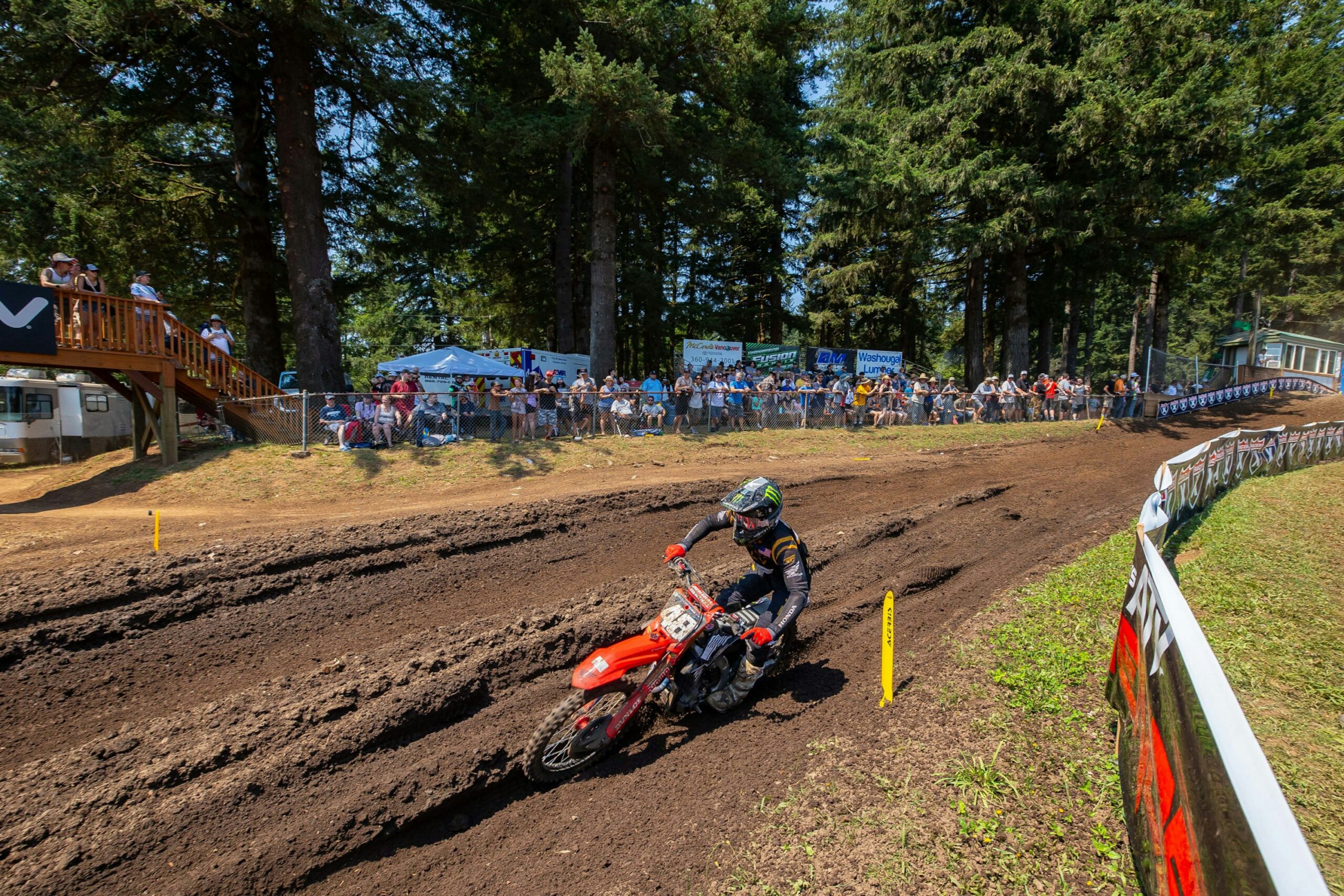
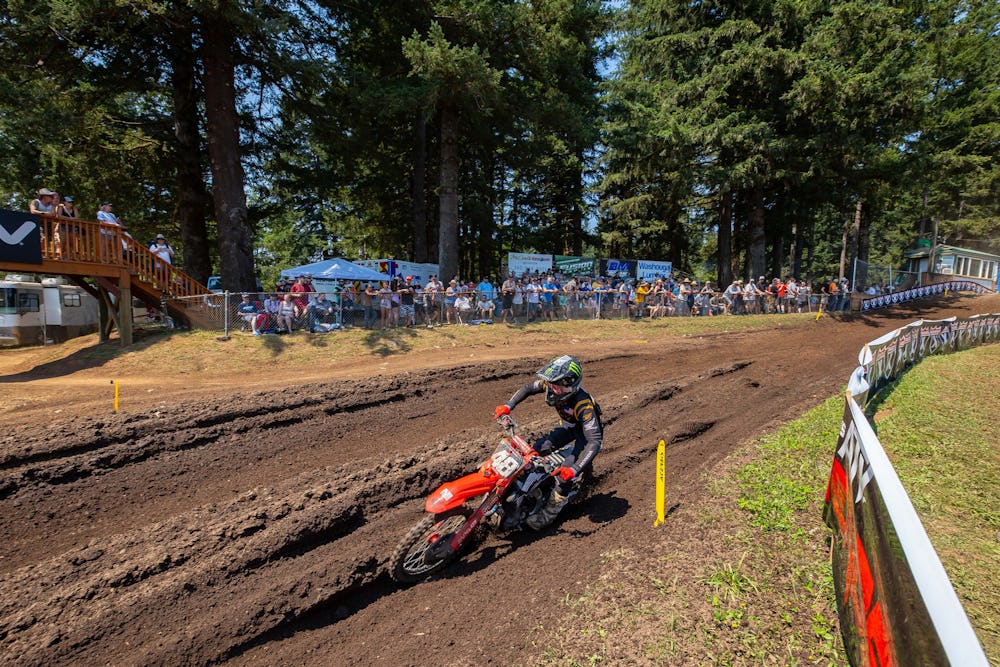
How to score 24 points when you weren’t sure you could race.
Source link
News
GP Report: MXGP of Czech Republic

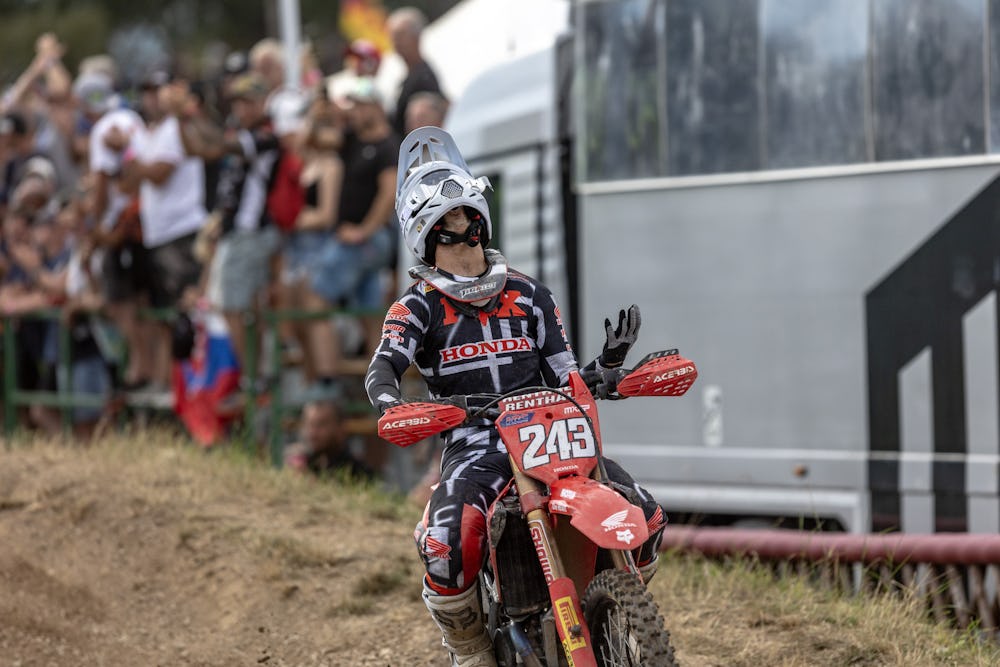
Exciting racing in Loket sees both championship leaders (Gajser and de Wolf) emerge victorious.
Source link
News
Garrett Marchbanks, ClubMX End Relationship
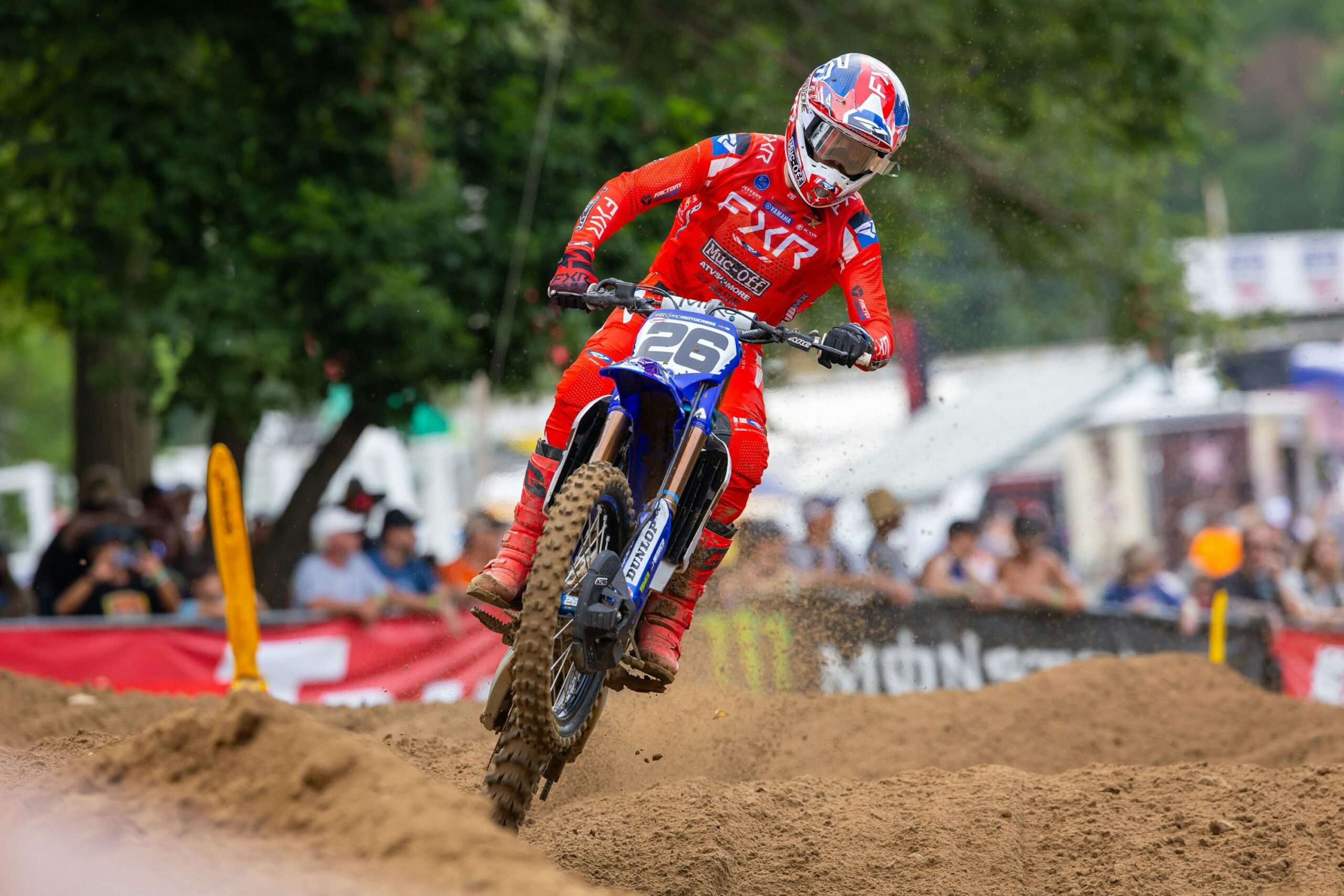
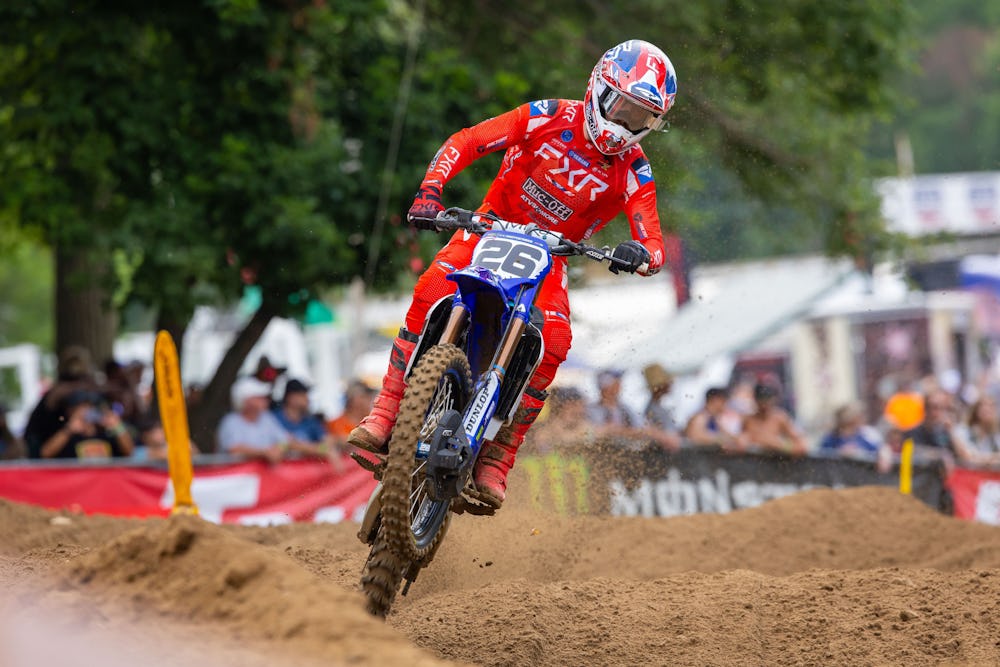
Marchbanks is signed with Monster Energy Pro Circuit Kawasaki for 2025.
Source link
-

 News12 months ago
News12 months agoWatch: GoPro Lap of Loretta Lynn’s Practice with Dakota Baker, Jeff Emig
-
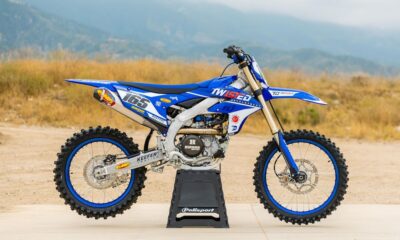
 News11 months ago
News11 months agoRacer X Films: 2023 Yamaha YZ450F Garage Build
-
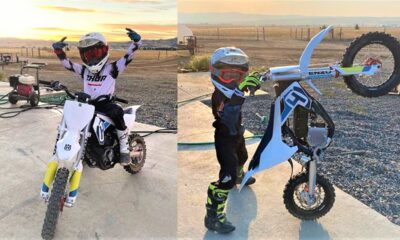
 News1 year ago
News1 year ago7 Year Old Rider Is A Motocross Superstar
-

 News12 months ago
News12 months agoYamaha YZ 250 F 2022 test ride
-

 News11 months ago
News11 months agoThe 2022 Yamaha YZ250FX, YZ450FX, YZ250X and YZ125X—Born to compete
-

 News11 months ago
News11 months agoHangtown Motocross Classic Lucas Oil Race Recap | 2022 Pro Motocross
-

 News12 months ago
News12 months agoWatch: Triumph’s Unveils New Motocross Engine
-

 News12 months ago
News12 months agoFreeride E-XC Review (2022 Edition)

